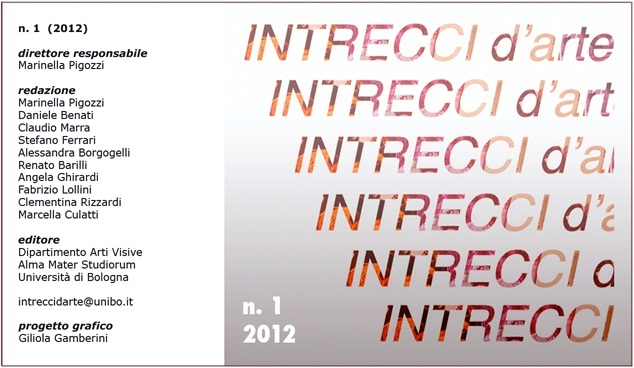Symbolist Russia: silver age reviews and illustrators
DOI:
https://doi.org/10.6092/issn.2240-7251/2655Keywords:
Russia, Symbolism, Graphic, Reviews, DjagilevAbstract
Towards the end of the 19th century in Tsarist Russia therewas a thriving bloom and development of a new active artisticscene guided by a group of artists who recognized themselvesin Western European Symbolism and who gave birth to theSilver Age. All the intellectuals, men of letters and artists whowere active part of this scene struggled to create a new formof art, freed from both the empty and stagnating academicties still based on stale models and a realism that hadbecome too popular and materialistic. This renewal ledliterature and poetry towards two distinct directions: on oneside the international school (Sologub, Dobroljibov, Brjusov,Balmont and Belyj) and on the other the more philosophical,mystic and religious current closer to the national tradition(Lermontov, Tjutcev, Baratynskij, Fet, Merezkovskij, Gippiusand Rozanov). This internal separation of the symbolistmovement took place in literature and in the figurative arts. Ifon one side the symbolists strongly refused both theexamples of the official classicism and the realist movementguided by the Peredvizhniki (a group of Russian realists who asa protest against academic restrictions formed an artistscooperative that generated a pictorial verism meant to turnpoor and rural people's life into something monumetalthrough a faithful reproduction of reality), many were theproposals to promote the newly born art. Artists such asAlexandr Benua (1870- 1960), Lev Bakst (1866-1924) andKonstantin Somov (1869-1939) adopted foreign models, whileothers, among whom Ivan Bilibin (1876-1942), ElenaDmitrievna Polenova (1850-1898) and Marjia Vasil'evnaIakunchikova (1870-1902), started and inner renewal aimedat reinterpreting some of the themes of the local folklore. Allof them however opted for the synthetic reproduction of theimage charged with a high evocative or better symbolic value.Such purposes found in graphic arts a fertile soil ofexpression, so much that all the above mentioned artistsventured in this field. To describe this tendency SergejMakowskij (1877-1960), one of the first critic of RussianSymbolism wrote:
If we leave to painting and to the other “major” arts thereality of this world, the expression of the forms, the realcolour, the chiarocuro of the relief and the illusion of theprospective, this graphic art keeps for itself only what it ownsby right: shades, margins, the delicate refinement of theedges not to be found in nature, colourful motives and theblack shapes of the silhouette. In this ghostly world graphicrules undisputed.
Meeting point of critics, men of letters, poets and artists ofboth Russian Symbolism schools was represented by the mainartistic-literary reviews of the time such as for example «MirIskusstva» (“The World of Art”, Saint Petersburg, November1898-December 1904), «Vesy» (“Scale”, Moscow, January1904-December 1909) and «Zolotoe Runo» (“The GoldenFleece”, Moscow, January 1906-December 1909).
Downloads
Published
How to Cite
Issue
Section
License
Copyright (c) 2012 Giuseppe Virelli
The copyrights of all the texts on this journal belong to the respective authors without restrictions.
This journal is licensed under a Creative Commons Attribution 4.0 International License (full legal code).
See also our Open Access Policy.
Images and photographs may have different terms of license.
In making material available online the Journal acts in good faith. Parties who have questions or who wish to contest the use of specific works may contact the Editor in chief.
Metadata
All the metadata of the published material is released in the public domain and may be used by anyone free of charge. This includes references.
Metadata — including references — may be re-used in any medium without prior permission for both not-for-profit and for-profit purposes. We kindly ask users to provide a link to the original metadata record.






